Metaverse companies are among the most innovative entities in the world. Each is poised to create parts of a virtual world unlike anything humanity has seen before. Every metaverse company also brings something unique to the metaverse. You’ll soon see what some of the significant players in metaverse development are working on. In doing so, you’ll glimpse humanity’s digital future.
Quick Menu:
- What Is the Metaverse?
- What Is a Metaverse Company?
- What Are Metaverse Companies Building?
- The Most Important Metaverse Companies Today
- How Metaverse Companies Relate to Web 3.0
What Is the Metaverse?
Of course, to understand what metaverse companies are building, you first need to know about the metaverse itself. The metaverse is essentially a merger between the online and physical worlds to create something new. Using devices like virtual reality headsets or even augmented reality apps lets you explore this new reality as a limitless, immersive, 3D environment.
The metaverse is boundless and without the inherent physical limitations of the normal world. This means that the metaverse can look and even operate in ways very different from what you’re used to. And the online nature of the metaverse means that you can experience it all in an entire social environment. It’s essentially a world limited only by the human imagination.
The metaverse exists right now. But it’s still in an early experimental phase. Nobody knows precisely how it’ll look in the future. But the metaverse companies building it are constantly trying out new and innovative ideas. By looking at what they’re doing today, you can get an idea of what the metaverse as a whole will eventually grow into. You’ll find a full exploration of the metaverse in the article “Metaverse Guide; Understanding The Basics Will Open Up a New World”.
What Is a Metaverse Company?
So what is a metaverse company? For example, a Metaverse company develops methods to access the metaverse and various things within it. This can include virtual worlds and environments, events like live performances, digital goods, and even architecture or working ecologies.
All of these developments are possible because of interoperability. This basically means that companies can work on one part of the metaverse while maintaining compatibility with other people’s work. This often manifests itself as interconnected spaces that maintain some level of persistence with each other. For example, the metaverse has a full-fledged economy that carries over between worlds. The economy even persists between the physical and virtual worlds.
This decentralized vision of the metaverse also means that companies can expand into an embedded internet with new easy-to-use devices. But like the early Internet, there’s still a lot of work to do on the metaverse. The metaverse is currently something of a “proto-verse”, like early Internet sites before web browsers settled on shared standards. People needed to use different programs during the early Internet to access sites. And right now, the metaverse is in a similar early state with many virtual worlds which aren’t fully connected.
Receive Metaverse Information & Related Topics
What Are Metaverse Companies Building?
The metaverse companies are creating projects as limitless as the human imagination. But most of their work fits into the seven layers of the metaverse. The term was coined by Jon Radoff, author of the Metaverse blog. Each of these terms describes one of the most fundamental principles of the metaverse.
Some projects will fit entirely within one of these layers. Others might do within two or more of them. But in general, most metaverse projects can be defined by the seven layers.
Infrastructure
Infrastructure refers to the networking implementations and hardware that powers the metaverse. This is somewhat similar to the ground on which buildings are constructed. The metaverse infrastructure includes networking implementations like WiFi, 5G, cloud systems, and even MEMS. This also includes physical elements like GPU cores which process metaversal data.
Human Interface
People interface with the world in a variety of different ways. When that interaction is extended to the metaverse, it’s called a human interface. This includes communication methods such as gestures, vocal commands, and neural interfaces. But even wearable electronics like smartglasses sit under the larger banner of human interfaces.
Decentralization
Decentralization refers to the fact that no single entity owns the metaverse. Companies can build elements that depend on or work with each other. This is most commonly seen with the metaverse’s economy. But it can also be seen in components like AI agents or the edge computing design methodology.
Spatial Computing
Spatial computing refers to the 3D elements of the metaverse. This primarily covers the 3D engines and components used to model the multiverse. But anything involving spatial positioning sits under this banner. Even mapping your real-world position with GPS to place it within augmented reality is still considered spatial computing.
Creator Economy
Creator economies refer to the fact that the average person can create and sell goods. Any of the design tools or asset materials used to create metaversal content fall under the banner of a creator economy. Both creating the tools and using them are part of the metaverse’s creator economy.
Discovery
Discovery refers to the methods people use to find new content. This can include elements like AI or ad networks that search out people interested in particular goods or services. But it also refers to social motivators like word of mouth that can spark people’s interest in a company or brand.
The Most Important Metaverse Companies Today
At this point, you can see just how expansive the metaverse is. Every metaverse company is working with the same general elements and infrastructure. But all of the following metaverse companies bring something unique and amazing to the process.
Meta
Facebook recently rebranded as Meta. The change in the name shows they’re determined to lead the way for other metaverse companies. Meta is working on hardware such as Oculus VR and project Cambria. In addition, the company is also working on a variety of different software projects related to the metaverse.
The most notable examples at the moment are the projects under their Horizon banner. This includes Horizon Marketplace, where users can buy and sell within the metaverse’s more extensive economy. Horizon Home and Horizon Worlds offer two different scales of exploration. Home is a cozy fit, while Worlds opens up a digital universe.
For more information about the Facebook (Meta) Metaverse, read “Facebook Metaverse; Explained, Examples, Devices, Vision & Critics.”
Video: Introducing Meta
Microsoft
Microsoft’s foray into the metaverse has come mainly from the union of two existing projects. Microsoft joined the mixed-reality capabilities of Microsoft Mesh with their Teams productivity software. The end result is a metaverse enabled productivity package called Mesh for Teams that’s primarily aimed at professional spaces. It’s one of the most substantial work-from-home solutions offered by metaverse companies.
People can use Mesh for Teams to recreate traditional office experiences. But it’s equally feasible to create even more productive work environments. The software suite can essentially provide a complete virtual office that matches almost anyone’s individual needs.
For more information about Microsoft Metaverse, read “Microsoft Metaverse; Learn About Microsoft’s Metaverse Strategy.”
Video: Introducing Microsoft Mesh
Bytedance
Bytedance is best known to most people as the parent company of TikTok. TikTok overtook Facebook on the Internet. And Bytedance is continuing the competition as one of the more substantial metaverse companies. They’re still in the early phases of this competition. But Bytedance’s already spent a reported $772 million to create a full virtual reality headset company called Pico. Meta’s Oculus still has a huge lead over Pico.
It’s essential to keep in mind that competition usually leads to innovation. Facebook and TikTok have kept each other growing and adapting to new trends. The VR movement should do the same.
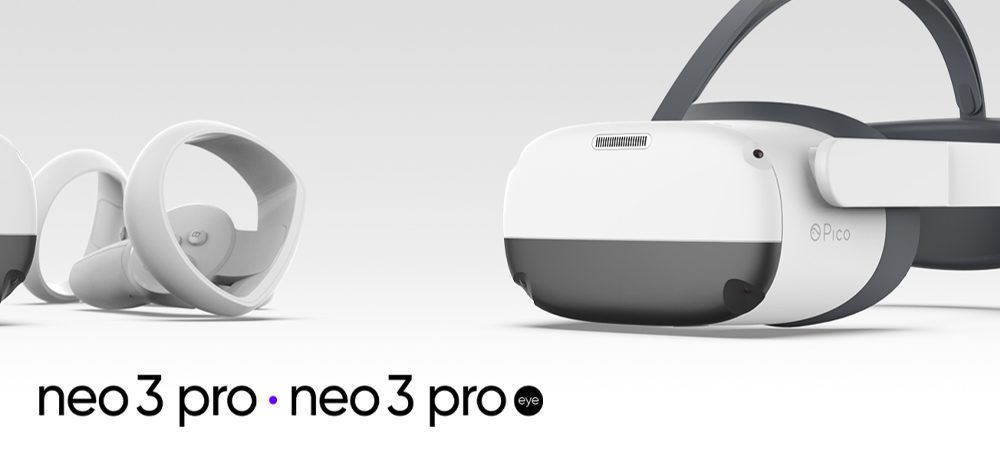
Image attribution: Pico
Sony (Epic Games)
Sony’s place among the metaverse companies comes from both hardware and software. Their PlayStation VR is an easy entry point into virtual reality for people who own a Playstation. However, its most considerable presence in the metaverse has come from its Epic Games division.
Epic is best known as the creator of Fortnite. And while it started out as a game, the system has evolved into a full metaverse implementation. Fortnite has seen everything from live concerts, from some of the biggest stars to special trailers of upcoming movies. The platform currently has over 60 million monthly users.
Video: Fortnite Chapter 3 Season 1 Flipped
Roblox
Roblox is best known for the software of the same name. They’ve become one of the significant metaverse companies thanks in part to community involvement with the Roblox software. The Roblox platform began as a game creation system back in 2006. But over time, the user community has pushed its capability to the next level.
Roblox currently has over 164 million monthly users. And all of those users can take an active hand in shaping the platform’s virtual world. Over time Roblox has become well known for a combination of heavy online social interaction and solid but easy-to-use creation tools.
Video: Roblox 2021 Cinematic
Niantic
Niantic took the world by storm when they created Pokémon GO. The smartphone app was many people’s first encounter with augmented reality. For the first time, they were able to walk in the physical world while interacting with the metaverse. Niantic is now building on that success with a $300 million push toward metaverse-related development. This makes them one of the largest metaverse companies.
The company’s founder, John Hanke, explains that he wants to essentially create a metaverse that’s “reality made better”. He sees a future where interactive creations and services provide value to users within a “real-world metaverse”.
Video: Explore like never before with Niantic
Nvidia
Nvidia is one of the largest producers of GPUs. This automatically makes them one of the more essential metaverse companies. They’re working hard to match innovative tools with their powerful graphical processors. Nvidia has announced that they will give away free versions of their “Omniverse” virtual world creation suites to individual artists. This $9,000 per year value allows people to craft custom content for the metaverse.
Nvidia has also created deals with multiple metaverse marketplaces to make it easier to sell their digital creations. The end result should be a metaverse marketplace that’s user-friendly and profitable.
Video: NVIDIA Omniverse for Creators
Binance
Binance is one of the metaverse companies working hard to build up the larger economy. A large part of this effort goes into the Binance NFT Marketplace. NFTs aren’t just static images. They’re also heavily used within the metaverse for unique digital items. As such, Binance’s efforts to create an NFT marketplace are significant for the metaverse as a whole.
Binance also maintains the Binance Exchange. It provides users with a selection of token pairs for the metaverse. This is often people’s first real interaction with crypto. And this metaverse company tries to ensure users have a good experience.
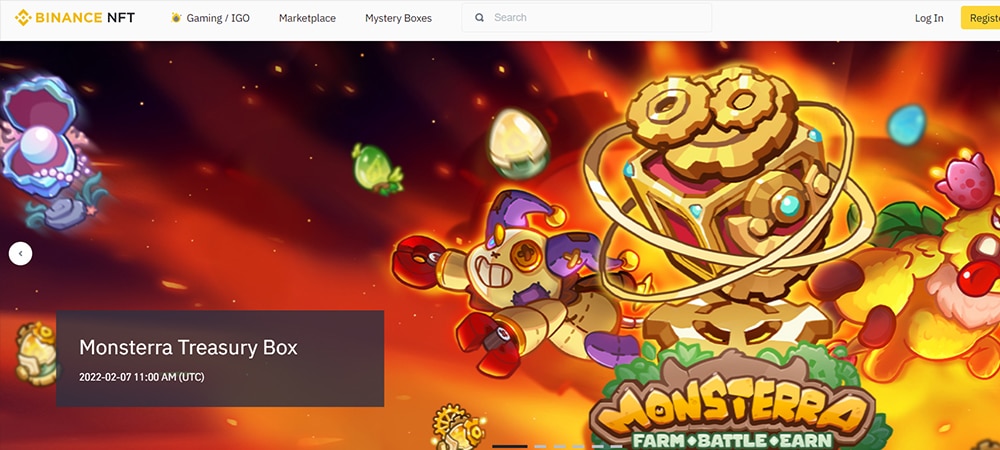
Image attribution: Binance
Magic Leap
Magic Leap’s stated mission involves amplifying human potential through immersive augmented reality (AR). They’re one of the metaverse companies particularly dedicated to bringing the metaverse into the physical world through AR. The company is differentiated from much of the competition by focusing on professional workplaces.
Magic Leap primarily targets professional industries which use large datasets. This includes fields such as architecture, engineering, health, and manufacturing. Magic Leap already has products specifically tailored to the needs of each field. For example, their Mixed Reality Viewer gives medical professionals the ability to work with patient anatomy data in 3D.
Video: Sigur Rós in collaboration with Magic Leap Studios
Decentraland
Real estate is one of the most critical parts of the physical world’s economy. So it’s hardly surprising that the metaverse has a thriving real estate market as well. But it’s perhaps best represented by Decentraland. Decentraland is one of the metaverse companies with the tightest focus on real estate.
The company has been so successful within that market that it’s had sales of up to $2.4 million in cryptocurrency. While that was the largest deal in Decentraland, it’s hardly a rarity. The company does massive business with NFTs, virtual land, and its own cryptocurrency called MANA.
Video: Introducing Decentraland
Google hasn’t made its plans as public as some of the other metaverse companies. It is known that Google recently combined two of their departments, virtual reality and augmented reality, back in November of 2021. The only project that has been announced from this merger is a video conferencing tool called Project Starline.
The holographic video conferencing tool will be among the first items from Google’s work on the metaverse. But it’s almost certainly not going to be the last. The company has already brought attention to augmented reality through their Google Glass project and Android smartphone platform.
For more information about Google Metaverse, read “Google Metaverse; Google’s Take on the Digital Universe.”
Video: Project Starline: Feel like you’re there, together
Tencent
Tencent is a Chinese company that’s perhaps best known in the West for developing Honor of Kings through their game development company TiMi. In 2021 it became the biggest mobile game in the world. Tencent is following up on that success by putting a new focus on the metaverse.
Tencent plans to become one of the larger metaverse companies by building an extensive network for multiple applications. Their metaverse implementation may well have areas for gaming, marketing, open collaboration, and of course, gaming. At the moment, Tencent hasn’t released very detailed information about their plans for the metaverse, but it’s sure to be significant.
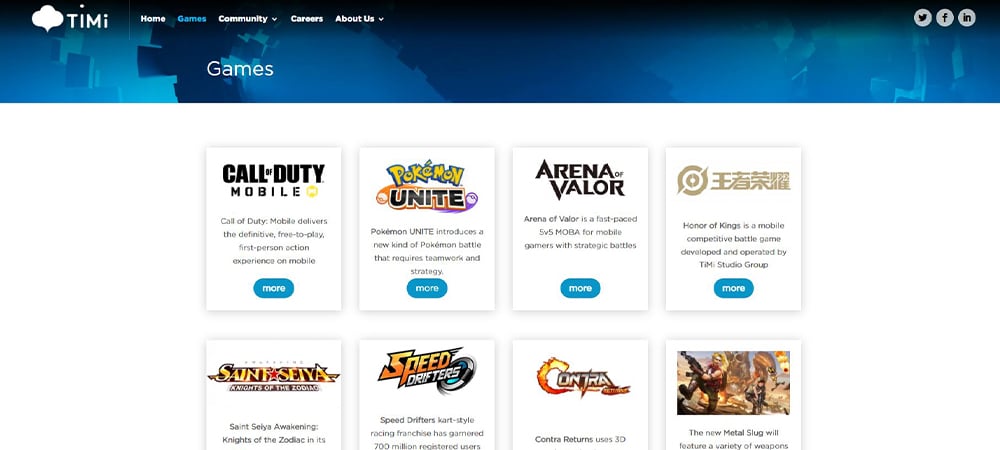
Image attribution: TiMi Studio Group
Apple
Apple is well known for bringing high-tech solutions into the home. This makes it a question of when rather than if Apple will become one of the significant metaverse companies. At the moment, everything is largely speculative. It is known that Apple’s CEO, Tim Cook, has called augmented reality both critically important and one of the few profound technologies.
Tim Cook’s comments on augmented reality suggest that the company might be more invested in AR than pure VR. However, some people speculate that Apple might be working on a system that can easily switch between the two.
For more information about Apple Metaverse, read “Apple Metaverse; How Apple Enters the New Digital Frontier.”

Image attribution: Apple
Unity
Unity brings a unique artistic view into the metaverse companies. Art is one of the foundational elements of the metaverse. 3D elements within either VR or AR are made up of both code and unique art assets. Code can be easily reused without anyone noticing. Unity wants to make it easier to extend existing art into new areas or styles too.
Unity’s AI-powered ArtEngine Style Transfer makes it easy to take existing art into new directions or styles. Or users can quickly take a doodle from their phone and turn it into a beautiful work of art for the metaverse.
Video: Unity ArtEngine Style Transfer (Beta)
Gather
Gather is well known as one of the metaverse companies most focused on bridging the gap between the standard Internet and the metaverse. When people think of virtual reality, they usually think of headsets. But Gather’s VR platform doesn’t require any special equipment.
Gather instead provides a metaverse that’s easy to enter into with hardware most people already own. Gather has become especially popular as a platform to stage interactive murder mysteries. Gather’s image library further emphasizes this common trope from Hollywood film history. This metaverse company has a wide range of pixel assets from older Hollywood films.
Video: 2021 Gather
Amazon
Metaverse companies typically enter into the digital realm with big announcements and releases. But there are also some examples of companies taking a slower and less easily noticed approach. Amazon certainly falls into the latter category. Many people don’t even know that Amazon has been integrating augmented reality into its systems.
But make no mistake, the metaverse is the future. And big tech companies like Amazon are ensuring they’re prepared for that metaverse future. You can discover more about Amazon’s current metaverse work and their upcoming releases in the article “Amazon Metaverse; Amazon’s Vision Entering the Metaverse”.
Video: AWS Cloud Quest – Cloud Practitioner | Amazon Web Services
How Metaverse Companies Relate to Web 3.0
The development of the metaverse is a large-scale work in progress. In many ways, it’s an evolution of the Web as a whole. The metaverse can be seen as the culmination of Web 1.0 2.0 3.0 development. And it’s particularly tied in with Web 3.0. The development of Web 3.0 brought distributed computing, 3D concepts, and more into the Internet. In many ways, it’s the bridge between the standard Web and the metaverse. You can get a broader view of how the metaverse ties in with these Web technologies by reading the article “Web 3.0 Guide; Clearly Explained With Examples”.
All of the companies seen so far have created some fantastic things. But it’s essential to keep in mind that the metaverse belongs to everybody. Companies, users, and everyone in the world have a part to play.
Did You Like This Article About Metaverse Companies?
You might also be interested in the following articles:
- Metaverse Meaning: Different Ways of Defining the Metaverse
- Oculus Quest 2: Overview, Features, Accessories and More!
- Metaverse Startups: 10 Compelling Metaverse Startup Companies in 2022
- Metaverse Trends; Upcoming Milestones for the Digital Frontier


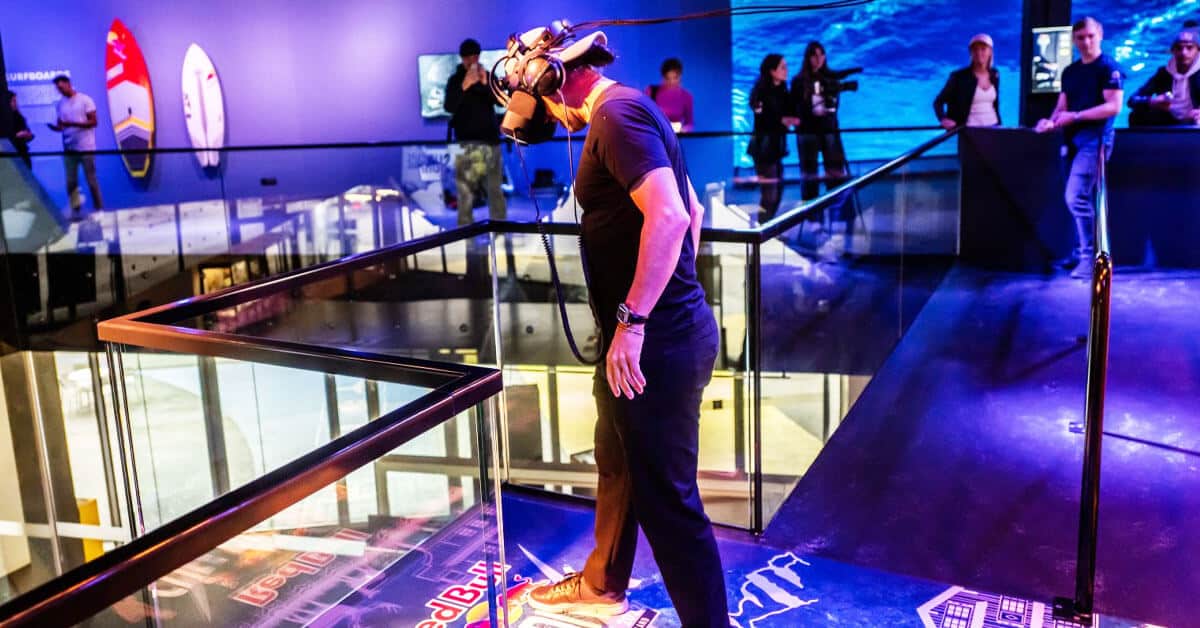



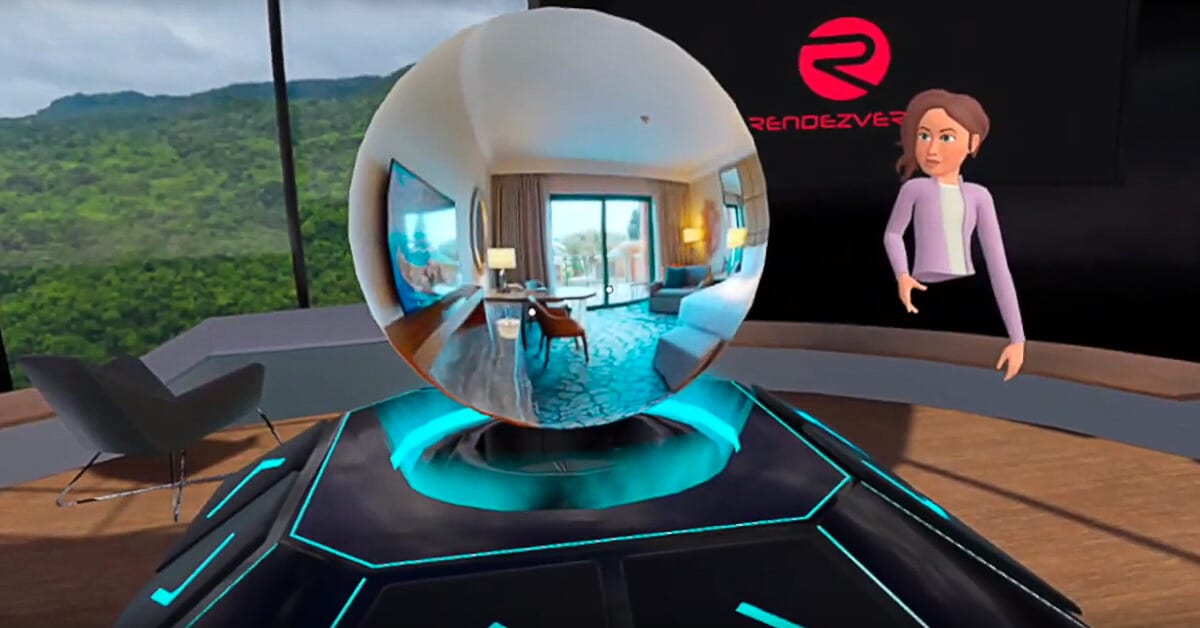


Leave A Comment